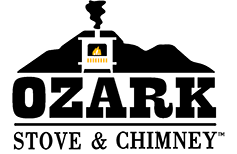Ozark Stove & Chimney Provides 3 Level Chimney Inspections Throughout the Ozarks
It’s easy to assume that your chimney is in great working condition at first glance, but dozens of threats could be lurking just beneath the surface. Water exposure, blockages, damaged chimney components hidden by brick, and creosote buildup are just a few issues that lead to a firestorm of costly repairs.
If you need chimney, stove, or fireplace services in the Greene County MO or Benton County AR area, don’t fear – Ozark Stove & Chimney has you covered. By scheduling an annual inspection with our team, we can uncover issues before they get too advanced and help you design a maintenance plan that could prevent future damage.
Why Do I Need a Chimney Inspection?
Many people assume that chimneys are strong because they are typically made of brick or another type of stone. And they are! …but only if they’re properly maintained and cared for by an expert.
Since masonry products absorb water, unprotected chimneys are essentially sitting ducks for issues related to water damage. In Southwest Missouri and Northwest Arkansas, weather can be temperamental. Natural weather events are always a structural threat to chimneys, regardless of location, and fall and winter present their own challenges due to the freeze/thaw cycle – when temperatures drop, expanding ice crystals cause cracks in the bricks. As the freeze/thaw process continues, the spalling bricks expand more. The moisture eventually erodes the mortar which leaves gaps in the joints to continue to take on water.
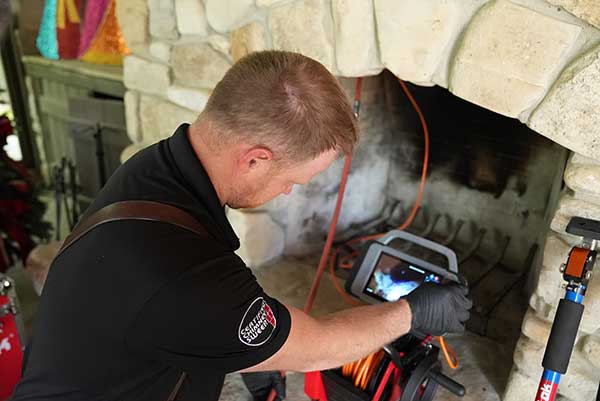
Our technicians are certified by the Chimney Safety Institute of America (CSIA) and are trained to spot all of the defects and signs of damage you may not be able to see for yourself. At Ozark Stove & Chimney, we pride ourselves on doing the right thing and providing the best customer service around. Our technicians will walk you through the inspection process and advise you on the best ways to tackle any chimney problems they identify.
What Is a Chimney Inspection?
A chimney inspection is an evaluation of both the interior and exterior of your chimney. During an inspection, a technician checks for any damage, brick and mortar deterioration, creosote buildup, and any other blockages that can obstruct ventilation and trap exhaust. Inspections are also recommended when a homeowner makes a systemic change, replaces an appliance, or is preparing to put their home on the market.
The National Fire Protection Association (NFPA) has established three levels of inspections for chimneys and other home heating appliances according to the NFPA Standard 211, which states that all chimneys and venting systems need to be inspected on a yearly basis. Venting systems include:
- Chimneys venting fireplaces
- Chimneys venting wood stoves
- Chimneys venting fireplace inserts
- Chimneys venting furnaces (oil and gas)
- Chimneys venting pellet stoves
Now, Ozark Stove & Chimney offers three levels of chimney inspections for residents in Southwest Missouri and Northwest Arkansas. We recommend the type of inspection based on what you are experiencing.
What Is a Level 1 Chimney Inspection?
A level 1 chimney inspection is the most common type of inspection we perform. It is a basic assessment that is recommended when the fireplace is performing efficiently and there are no concerns of underlying damage. During this inspection, we will do a visual examination of all accessible portions of the chimney’s interior and exterior.
The technician will check the masonry for signs of water damage and inspect the chimney liner for potential creosote buildup. If a creosote buildup is found, we will determine how severe it is and recommend the most appropriate cleaning option.
Level 1 chimney inspections are typically recommended under the following conditions:
- This is your regularly scheduled annual inspection and there have been no prior issues.
- Your home is located in an area with high winds, and you have concerns that debris can get into your chimney.
- There are signs of creosote buildup or a blockage in your flue.
What Is a Level 2 Chimney Inspection?
During a level 2 inspection, we use a closed-circuit internal camera to get a thorough look at the chimney and flue, making it a bit more detailed than your basic level 1 overview. In some cases, we may require access to surrounding areas such as attics, crawlspaces, and basements. If you use your fireplace, furnace, or wood stove frequently, a level 2 inspection should be conducted annually.
A Level 2 inspection may also be recommended if you have noticed any changes in the operation or appearance of your home heating appliance or chimney since your last inspection, or if there are any noticeable damages.
Level 2 chimney inspections are typically recommended under the following conditions:
- There has been a change in the way the system is used (changing to gas instead of burning wood).
- The chimney or adjacent area has experienced some sort of damage.
- You are buying a new home and want to ensure the fireplace, wood stove, or gas logs and chimney are in good condition.
- There will soon be changes in home ownership – sale or transfer.
- The exterior chimney has been damaged.
- There has been any water damage to the chimney.
- The flue has been damaged and needs to be repaired.
- You plan to make any changes to the fireplace or stove.
- Your chimney has never been inspected, but you plan to use your fireplace, furnace, or other home heating appliance soon.
- You plan to use your fireplace for the first time after a long period of inactivity.
- Your chimney has never been inspected, but you plan to use your fireplace soon.
- Your home has never had a chimney inspection, and you have not used your home heating appliance in many years.
- Your home is going to be put on the real estate market soon and you want to complete a chimney inspection before it is listed.
- Your home has had recent renovations that may have impacted the integrity of your chimney.
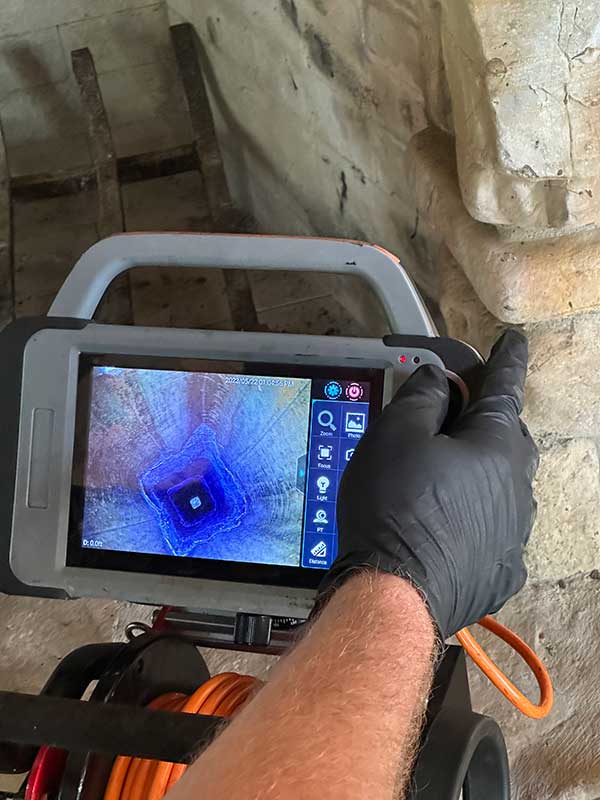
What Is a Level 3 Chimney Inspection?
Level 3 inspections are the most in-depth type of chimney inspection. Unfortunately, they are also the most disruptive because we need to access concealed areas of the chimney. This may require the removal of part of your chimney, which can result in damage to or removal of walls, ceilings, siding, and other structural property. Level 3 inspections are only recommended when there is suspicion or signs of severe structural damage, such as a chimney fire, lightning strike, or a severe storm that causes a tree to fall onto your chimney.
How Often Should I Have My Chimney Inspected?
For safety and maintenance purposes, it is important to establish regular chimney inspections and sweepings. Other factors can influence the recommended frequency of checks, including how often you use your home heating appliance, the type of fuel you burn, and any previous problems with your chimney system.
As a standard, both the NFPA and CSIA advise annual chimney inspections with both normal and infrequent use. If you use your chimney more frequently or have experienced recurrent problems, scheduling inspections two to four times a year may be the better route for locating and addressing issues promptly.
Ready to get something on the books? Call or reach out online now.
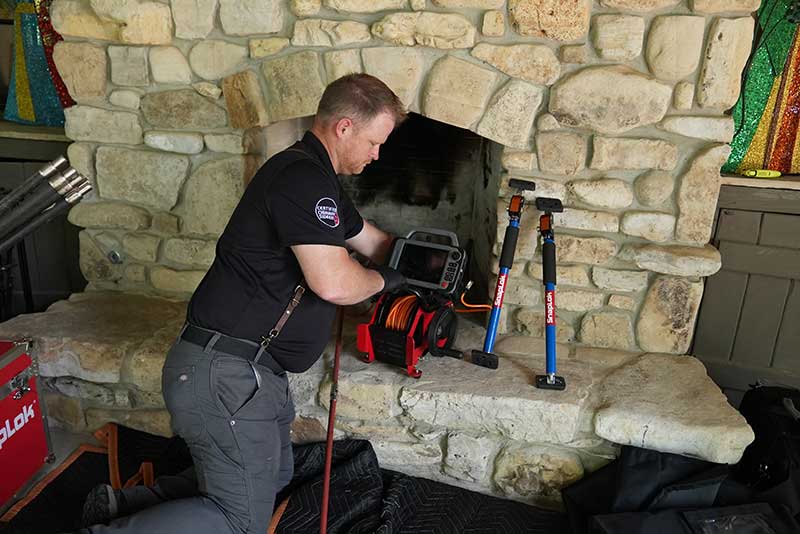
What Could Happen if I Don’t Have My Chimney Inspected?
A chimney that has not been properly cared for is a potentially catastrophic disaster waiting to happen. And yes – inactive and infrequently used chimneys can still present hazards that can have dangerous consequences to your family and your home. What can happen if you don’t give your chimney the attention and maintenance it needs?
Fire Risk
A chimney fire is one of the biggest risks associated with a neglected chimney. Over time, combustible byproducts can build up in the interior of the flue, one of the most concerning being creosote – a combustible tar-like substance that clings to the interior surfaces of the chimney, including the flue lining, chimney walls, and smoke chamber.
Creosote occurs in three stages:
- The first stage appears as a light, flaky soot.
- Stage two presents as hard, shiny black deposits.
- The final stage of a creosote buildup is a highly combustible gummy/glazed tar.
Only a CSIA-certified technician can positively identify the stage of the creosote and perform the proper removal to return your chimney to working order. Creosote logs can help manage creosote levels in between inspections, but they shouldn’t be relied on to replace a thorough sweep and inspection from a certified professional.
Obstructions
Chimney obstructions can happen in a variety of ways: outdoor foliage can fall into a chimney with a cracked or missing cap, animals can make the cozy space their home, bricks and masonry can chip away and accumulate, and the list goes on…
One common trait all of these things share is that, if the debris is not removed, smoke exhaust cannot vent properly to the exterior of your home. This can lead to toxic fumes such as carbon monoxide escaping into your living space, putting the health of you and your loved ones at risk.
Structural Issues
Chimneys are vulnerable to natural elements. Rain, snow, wind, and falling debris can all impact the integrity of your chimney both in the short and long term. Chimneys that are not waterproofed or professionally maintained may be subject to water damage with continuous exposure. This can cause spalling brick, a damaged liner, and mortar deterioration.
In addition, strong winds can cause things like tree branches or large pieces of flying debris to fall onto your chimney and compromise its overall stability.
Lackluster Performance
If a chimney is not tended to, it will not work efficiently. When a chimney’s airflow is compromised by obstructions, it will increase fuel, gas, and oil use, all while decreasing heat output. In the end, if you’re investing in a home heating appliance, you want it to work – and work well! Trust us from the start to minimize the chance of threats and other hiccups down the line.
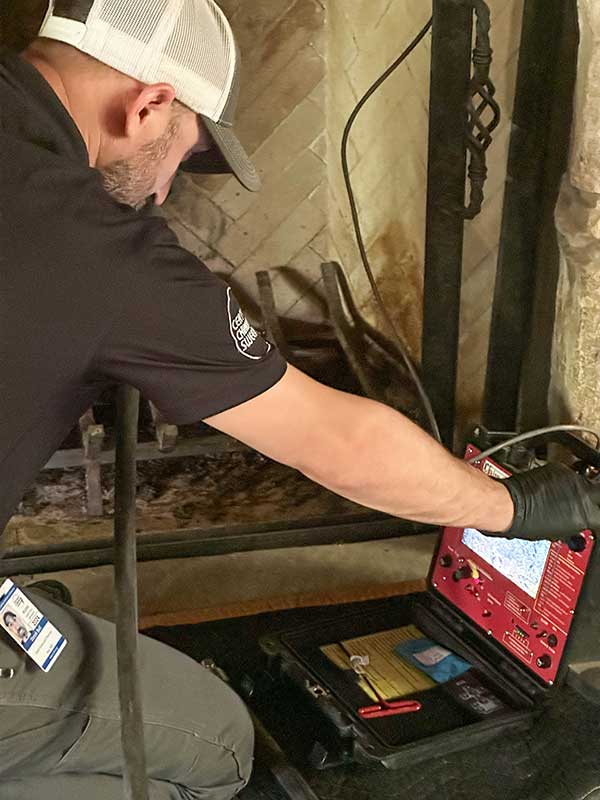
What Parts of a Chimney Are Checked in an Inspection?
There are critical parts of your chimney’s system that should be checked regularly. These areas can be damaged due to weather or missing altogether, compromising your chimney’s safety, and unless you are on your roof often and know what to look for, big threats may be missed.
A chimney professional can identify any problems with the following components during an inspection.
- The Crown: The crown is usually made of concrete, but may also be stone or metal. It sits at the top of the chimney and diverts water away from the chimney top exterior to prevent erosion. A cracked crown is often the result of weather exposure or faulty construction materials. If it is damaged, rain can run down the sides of the chimney leading to disintegration of constructed materials.
- The Flue Liner: The flue liner is an exhaust tube made of clay, ceramic, or metal. It runs the entire length of your chimney and carries the fumes and smoke up your flue liner and out of your home. The liner protects chimney walls from overheating and prevents harmful toxins from backing up into your home. A flue liner can be cracked due to excessive heat, wear and tear, or water damage. A damaged flue liner can expose your home to carbon monoxide and other chemicals.
- Masonry: If you have a masonry chimney, porous bricks can absorb water and can lead to brick spalling and chipping mortar. Bricks also expand or contract with heat or cold which can eventually cause small cracks to form. These cracks can grow larger with time and the bricks may become unstable. If the bricks aren’t repaired promptly, your chimney will weaken. And if the brick damage progresses unchecked, you may be facing a costly chimney rebuild.
How Much Does a Chimney Inspection Cost?
The cost of a chimney inspection can vary depending on the type of inspection you need, whether or not our assessment requires repair work, the scope of the project, and the materials needed. It is important to note that regular inspections and cleaning can help limit issues and protect your overall repair budget, so it’s always a service that’s well worth the investment.
Long story short, the longer your chimney goes neglected, the more likely it is that there will be serious problems that are expensive to fix. Prevention is the best maintenance plan for your chimney.
Are You Ready for Your Chimney Inspection?
Before you get ready to light up your fireplace or wood stove, give Ozark Stove & Chimney a call at 417-201-6585 or head to our website to schedule an appointment online. A thorough inspection by a qualified professional ensures your home’s safety and puts your mind at ease. A member of our customer care team will get you set up with one of our experienced, CSIA-certified technicians, and we will get your chimney in tip-top shape in no time.
Check out our other chimney services: in addition to chimney inspections, we offer masonry repairs, chimney relining, chimney sweeping, and more.
